UK Power Networks creates The Open Energy Data Maturity Framework (OEDMF) as a comprehensive resource to help organizations utilize Open Data.
May 15, 2023
Abstract
- Open Data (OD) isn’t in a new era as such. It is developing and expanding into new areas – Energy being an example
- For stakeholders and participants in these sectors where OD is a new prospect, presenting both challenges and opportunity, establishing an initial direction can be particularly taxing
- The Open Energy Data Maturity Framework (OEDMF) provides a comprehensive resource that provides definition of the enabling capabilities an organisation needs to implement OD in Energy, along with subsequent assessment of corresponding maturity
- Whilst specific to Energy, the majority of the framework is applicable to other sectors
Introduction
There is increasing demand for energy data. Major drivers such as tackling global warming has led to a demand for renewable energy generation, electrification of transport and changes in lifestyles. Open energy data helps in all these aspects, from making quicker and better-informed investment decisions to improving the accuracy of modelling load or generation. The applications and use cases are endless. This presents a number of challenges but many exciting opportunities within the energy sector.
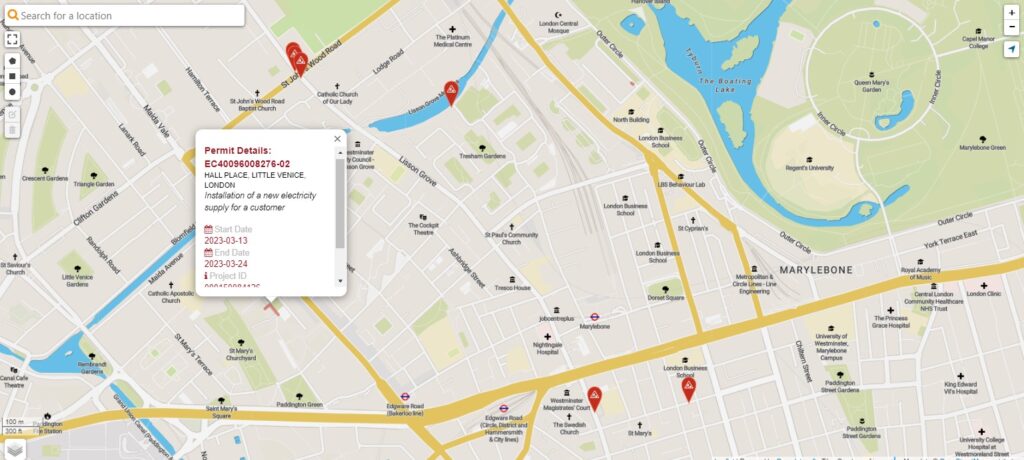
Our Open Street Works dataset is an example of a challenge but also an exciting opportunity – a dataset that is updated every two hours, showing where we have live street works activities. This requires good data governance, data quality and automation. This dataset provides visibility to other utilities and local authorities. Real synergies could be achieved, if our proposed street works, that is, works that are not yet live and are a number of weeks away, are surfaced which enables opportunities for collaboration. For example, other utilities can undertake their projects in the same area at the same time we do, without having to apply for permits and road closures that we have already secured. This is also beneficial to society as it reduces the total volume of traffic management and minimises disruption to the general public.
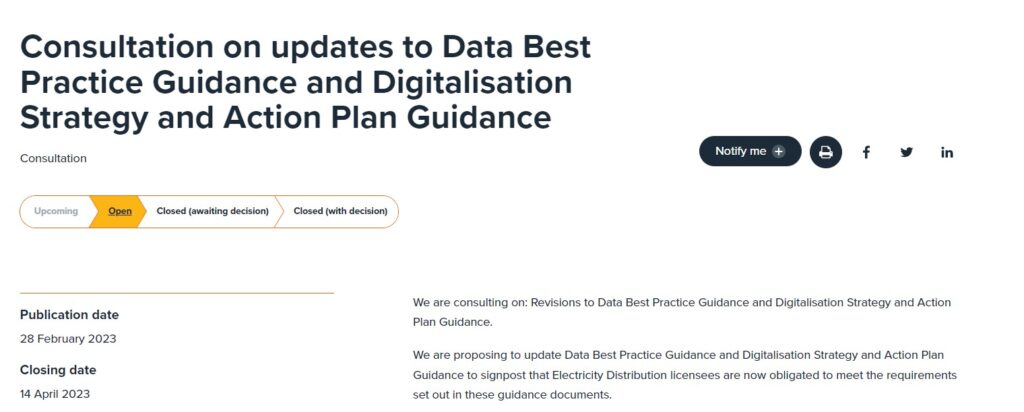
As open data is in its infancy within the utilities and energy sector, there is not a lot of thought and no manual on how to improve/advance in this space. And whilst Ofgem have been guiding the sector with its Data Best Practice guidance and principles, what is missing are ideas and a working level framework on how to achieve this. This paper presents an assessment framework that can be used by energy organisations in developing and implementing their open data strategies.
Some will tell you that you cannot effectively manage something if you do not have the ability to measure and monitor consistently. This is true for most things. But even more so for something as nascent as Open Data. A maturity framework can be useful in providing direction and facilitating continuous assessment of ongoing progress, so a manager has the metrics to inform what activities are required to drive improvements. I am pleased to talk about an Open Energy Data Maturity Framework (OEDMF) and share a review of our progress at the end of 2022 and as we progress through 2023.
The Open Energy Data Maturity Framework
There are several data maturity frameworks that exist with respect to data maturity, but there are none that relate specifically to energy. We studied existing frameworks and created our own for energy. Developed by Matt Webb – Head of Enterprise Data Management at UK Power Networks, based on extensive research of existing frameworks and engagement with a cross-section of relevant stakeholders, this is specific to energy and considers all aspects relevant to energy data.
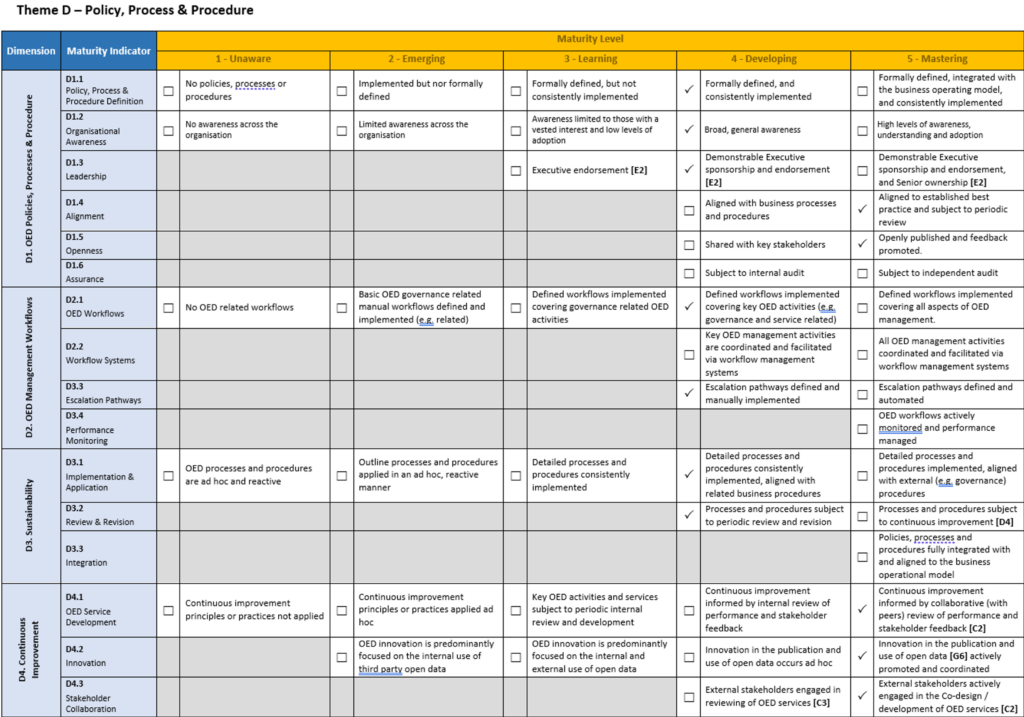
The OEDMF sets out:
- Seven themes – from strategy to data publication. These are principal categories fundamental to Open Energy Data (OED) maturity;
- 38 dimensions define the specific arrangements, capabilities, and processes that an organisation needs to develop and implement. It is these dimensions upon which OED Maturity is assessed, with each Dimension being assigned a maturity rating of one to five;
- Maturity indicators detail the specific characteristics within each of the individual dimensions. These are presented within the OED Maturity Matrix in a linear form, defining how each Maturity Indicator progresses as an organisation move up from one maturity level to the next, from one to five. Individual Maturity Indicators have not been specifically defined. They only feature within the OED Assessment Matrix and are intended solely as headers to group the descriptive characteristics by which maturity is assessed. It is these descriptions that provided insight into the nature and scope of each Maturity Indicator.
At the start of our Open Data programme, we set an aspirational overall end score of ~ 92% – recognising that it is not always practicable (whilst desirable) to achieve 100%. We scored 45.11% as a baseline. A higher score indicates maturity and has a proportional effect on an entity’s data outputs and data services, which stakeholders use.
At the end of 2022, we scored 67.56%, we had an internal review and the results are shared openly on our Open Data Portal. We had made strong progress across all themes and dimensions, advancing on a number of maturity indicators.
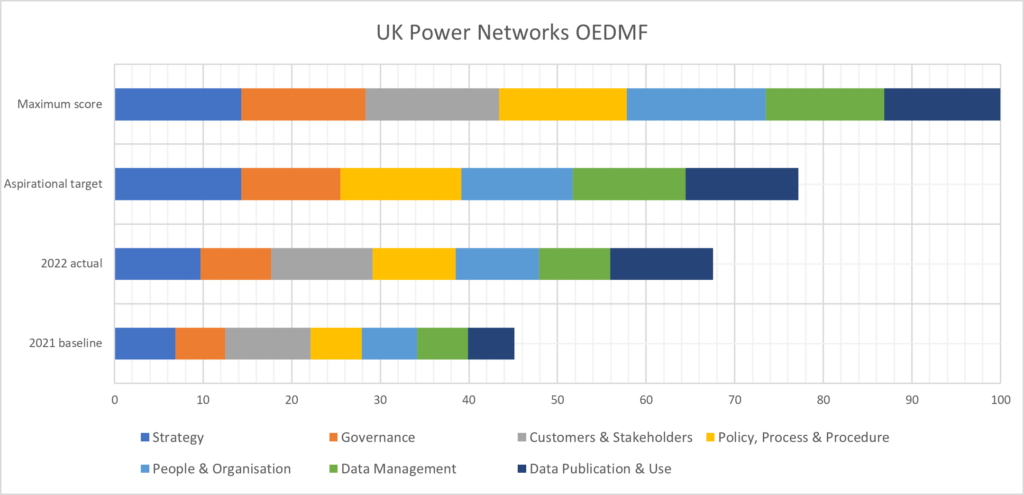
Our assessments in 2021 and 2022 revealed useful insights of our strengths as an organisation, but also areas to improve upon. It also provided context to understand changes over time. We will discuss some of the improvements behind our score, which are useful for any organisation looking to improve our open data maturity:
- A major step forwards was with the launch of our Open Data Portal in October 2021. This centralised a number of functions including data requests to our organisation, hosting datasets complete with contextual metadata and data triages results, optionality to layer different datasets and crucially export options in standardised formats and via API;
- We recruited technical expertise in the form of data engineering, and established a data governance team – to coordinate data quality activities and best practice across the organisation, recognising the existence of this function a characteristic of a mature organisation;
- We pushed forwards on enterprise data management with the implementation of Azure; and
- The biggest step forwards was winning hearts and minds inside and external to our organisation to demonstrate and recognise the value of Open Data. We engaged users for reuse cases and to understand the value. We addressed real issues and problems faced by our stakeholders that truly matter.
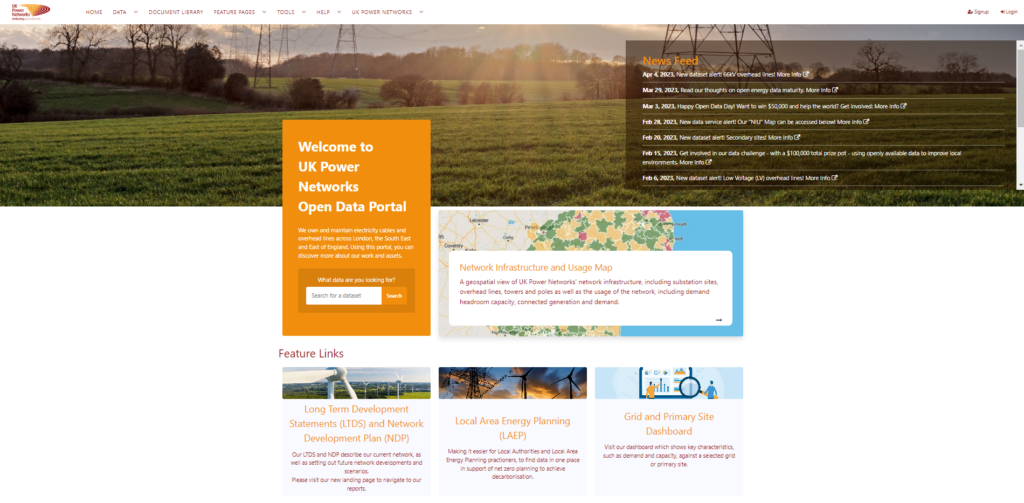
Conclusion
We have found the OEDMF highly beneficial in informing team and individual targets setting in our 2022 activities. Ultimately, this has helped us develop and deliver open data services, engaging with stakeholders to make sure these outputs are fit for purpose. Examples of these data services include the Grid and Primary Dashboard and the Network Infrastructure and Usage Map.
We encourage other organisations to utilise the framework to help inform their own strategies and development plans, establish a baseline and assess their organisation periodically to measure progress, and identify strengths and weaknesses. As more organisations use this framework and publish their scores, the industry can then benchmark organisations, driving a competitive state which benefits open data users. However, this can only be achieved if organisations agree to collaborate, share and benchmark. You can download it here and be sure to share your results.